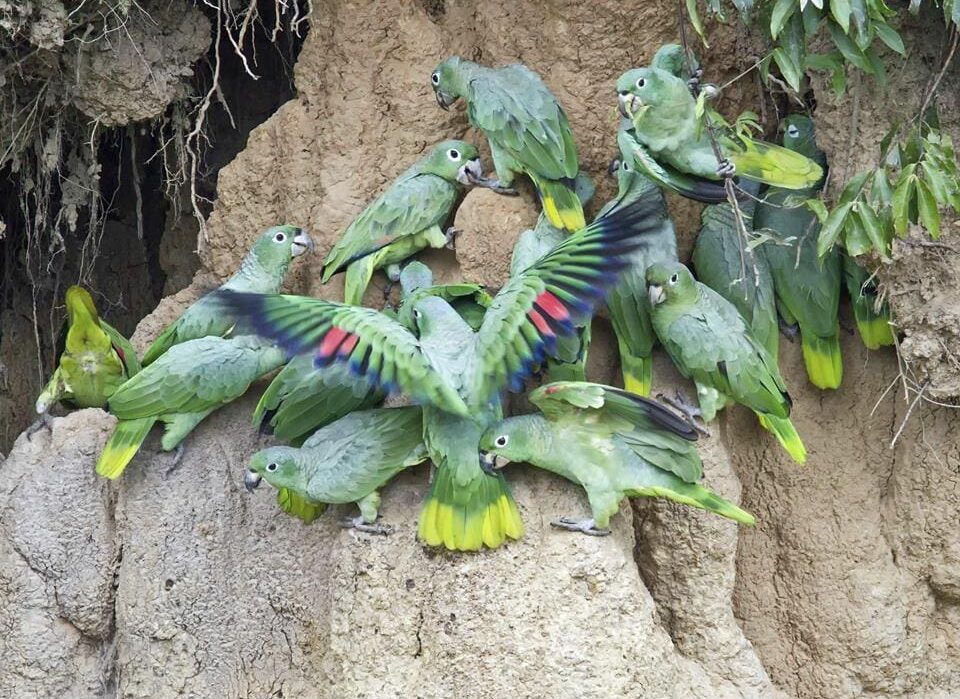Northern (Amazona guatemalae) and Southern (A. farinosa) Mealy Amazons are heavily exploited for trade and affected by hunting and habitat loss. Since 1981, tens of thousands of individuals have been traded on the international market. Much of the birds’ original forest is being cleared for agriculture. A. guatemalae has been wiped out from almost half of its original range.
The World Parrot Trust has funded research on the effects of forest disturbance and genetic analysis on the Central American and South American subspecies, leading to a species split and reassessment of status. The WPT takes part in captive management and long-term monitoring of birds caught in trade and released from rehabilitation centres in Brazil. Rescue facilities take in and rehabilitate Southern Mealy Amazons caught in the trade. Many individuals have been released back into the wild.
As a result of molecular studies, Northern and Southern Mealy Amazons were recognized by the IUCN. Other molecular work in 2019 determined that the Atlantic population in Brazil merited a special conservation focus.
Status: Northern – IUCN Near Threatened / CITES Appendix II Southern – IUCN Least Concern / CITES Appendix II
Populations: Unknown, decreasing.
Range: Northern – Along the Caribbean slope of Central America, from Veracruz and Oaxaca, Mexico south through Belize, Guatemala, Honduras, Nicaragua and Costa Rica.
Southern – Widespread from eastern Panama, south and east through Colombia, Venezuela, Guyana, Suriname, French Guiana, Ecuador, Peru, Bolivia and Brazil.
Natural history: Both species live in humid lowland or montane rainforest, near clearings and on plantations with forest edge. They are seen in pairs or small flocks; outside the breeding season; roosts may have several hundred birds. Feeding is in the upper canopy for figs, young shoots and legumes.

